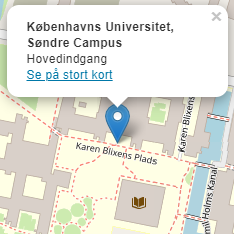Complementation pathway, Matrix-clause hypothesis or Conjoining pathway: A case study of Modern Chinese huaiyi ‘to doubt’ predicates
Haiping Long er professor i lingvistik ved School of Foreign Languages, Sun Yat-sen University (Guangzhou, Kina) og for tiden Alexander von Humboldt experienced research fellow ved Heinrich-Heine-Universität Düsseldorf. Hans forskningsinteresser omfatter historisk lingvistik, grammatikalisering og Discourse Grammar, og han har bidraget til disse forskningsfelter med mere end 40 publikationer i bl.a. Studies in Language, Language Sciences, Lingua, Linguistics, Functions of Language, Studia Linguistica og Dialectologia et Geolinguistica. Han er medredaktør på World Lexicon of Grammaticalzation (2. udg.) og har oversat to bøger om grammatikalisering til kinesisk.
Abstract
Modern Chinese clause-taking conjecturing huaiyi predicate that is mostly used in third person contexts (e.g. Renmen huaiyi zheming taoyi de jingcha henkeneng canyu le zheqi anjian. ‘People conjecture that the escaped policeman had probably been involved in the case.’) is actually a parenthetical structure. Diachronically, it does not develop from an NP-taking huaiyi predicate (e.g. Wo hen huaiyi zhege shuofa. ‘I doubt the statement a lot.’) or a clause-taking doubting huaiyi predicate (e.g. Du Yifu changchang huaiyita yuerzi you guo nazhong ge’ermen yiqi de shiguang. ‘Du Yifu often doubted that he had had times of buddy loyalty with his son.’); it develops instead from a prosodically-separated conjecturing huaiyi predicate (e.g. Renmen huaiyi, zheming taoyi de jingcha henkeneng canyu le zheqi anjian. ‘People conjecture, the escaped policeman had probably been involved in the case.’). The goal of this talk is to show that its formation has not followed a commonly-accepted Matrix Clause Pathway, which argues that a parenthetical clause-taking predicate develops from a corresponding matrix clause structure. Instead it has followed a hypothesized Conjoining Pathway that essentially involves the loss of phonetic gap between a prosodically-separated huaiyi predicate and the clause that it takes, and that the hypothesized pathway has cross-linguistic significance.

